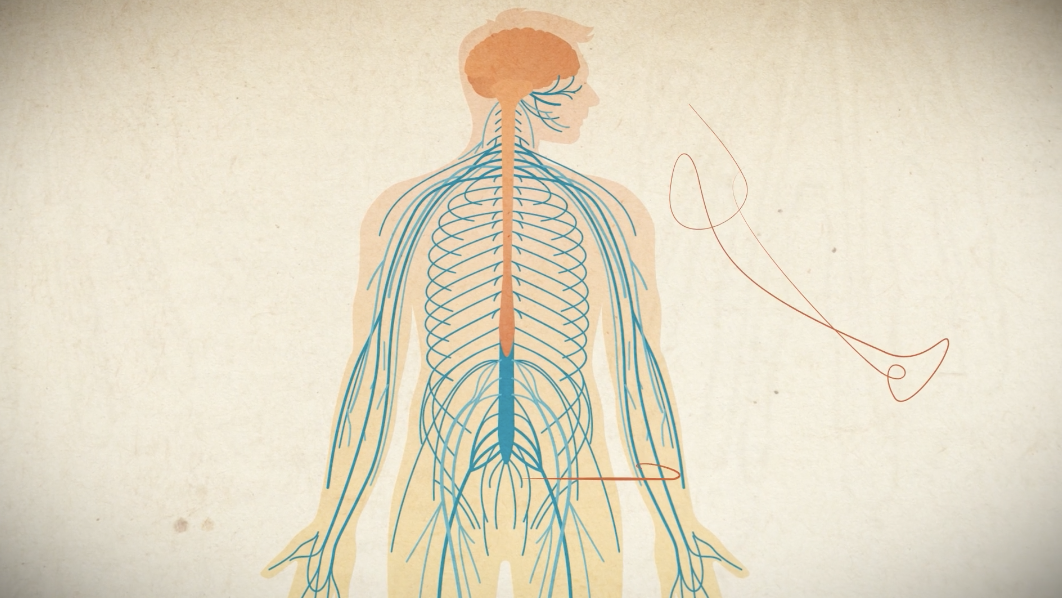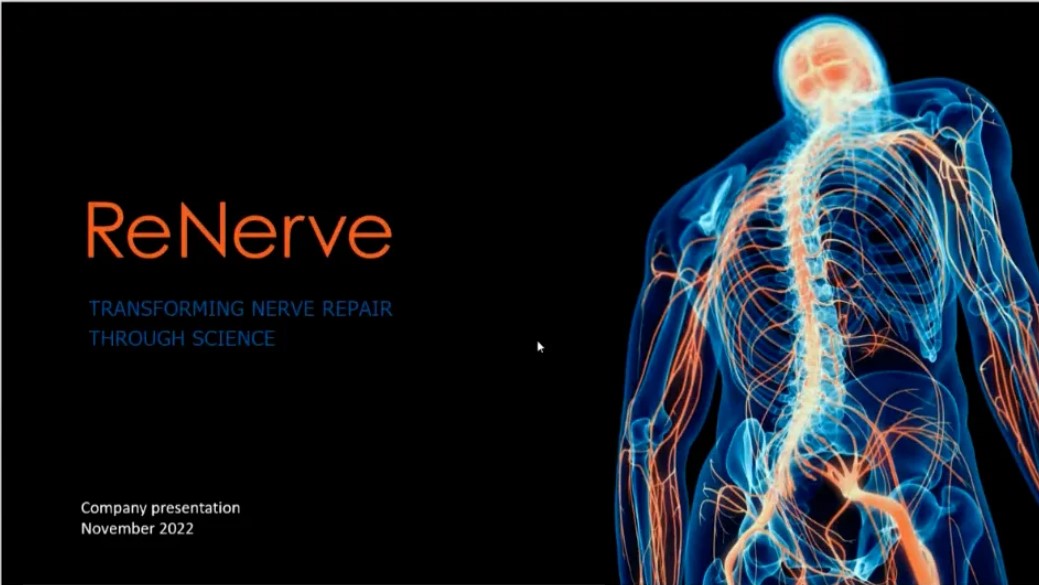Novel Products to Transform the Repair and Regeneration of Damaged Nerves
RENERVE LTD
ReNerve is developing a portfolio of tissue-based nerve repair products that are designed to be cleaner and safer than current alternatives. The products being developed by ReNerve are targeting the repair and/or replacement of peripheral nerves that have been injured following trauma, malignancy or surgery targeting better outcomes for patients. In addition to the healthcare and economic burden (estimated at $4bn p.a. in the United States), the impact to productivity is significant as most patients are of productive age and face long periods of rehabilitation and varied post-surgery outcomes. Opportunities exist to treat peripheral nerve injury (‘PNI’) and improve patients’ quality of life and independence. In the US there is estimated to be more than 900,000 trauma related PNI cases per annum. Peripheral nerves can also be injured during other surgical procedures such as prostate tumour removal, breast augmentation, cancer resections, during orthopaedic surgical procedures such as hip and knee replacements as well as maxillofacial reconstruction.
Latest ReNerve NewsKEY INVESTMENT INSIGHTS
Clear Business Strategy
ReNerve’s strategy to build the company is to gain approval for its product portfolio over the next 3 years. Through relationships with regional or country-based distributors, ReNerve will launch its products into global markets. The company’s first product, the NervAlign® Nerve Cuff, was recently cleared for marketing and sales in the initial target market, the USA, where ReNerve is partnering with local distributors for sales and distribution support. The company will now look to seek approval for the NervAlign® Nerve Cuff in Europe and other jurisdictions. Following on from the NervAlign® Nerve Cuff, ReNerve will aim to get its NervAlign® Graft and a Dura mater replacement product into the market. This will give the company a portfolio of products which will allow for multi-product purchasing.
Scalable Business Model
Estimates for the size of the global PNI market vary. ReNerve is initially focused on the US market and then will expand into other major global markets.
The market size for peripheral nerve injury repair varies with Brattain (2015) estimating the market opportunity for peripheral nerve repair products at $1.6bn p.a. in the U.S. alone, with some US banking analyst reports estimating the market to be worth between $2.2bn and $3.0bn p.a. ReNerve is using the biomaterials market numbers from the July 2020 Markets report which indicates the size for the biomaterial medical device sales market is currently worth USD$547m, growing at over 13% and targeted to reach over USD$1.2bn by 2025. The USD$547m market is made up of current sales of biomaterial products such as nerve cuff and wrap products as well as allografts and conduits. The market is widespread with approximately 5,000 surgical centres in the US undertaking some level of neurosurgery, predominantly with neuro and plastic surgeons. The majority of procedures still use harvested tissue to repair and replace injured peripheral nerves due to the lack of alternatives. Therefore, by bringing cleaner, safer and better products to market, ReNerve has the opportunity to capture some of the existing market (which is growing) and to expand the market beyond the current forecasts.
Successful Management
ReNerve was established through the joining of minds from leading CSIRO researchers, a neurosurgeon and material researchers with a background in biochemistry and physiology. It is now under the exceptional stewardship of Mr Stephen Cooper as the Independent Chairman. Mr Cooper is a managing director of Grant Samuel – a leading independent Australian investment banking business. At the heart of driving ReNerve and delivering shareholder returns are experienced ASX practitioners with extensive medical backgrounds in Dr Julian Chick (CEO), Dr David Rhodes (CSO) and Dr Alex Adamides (CMO).
High Barriers to Entry
ReNerve has worldwide exclusivity for the use of Leader Biomedical’s know-how and licensed IP portfolio for the use of supercritical CO2 for cleaning and preparing tissue products for use in nerve repair. The portfolio includes Leader Biomedical’s supercritical CO2 and manufacturing knowhow incorporating NovaSterilis’ supercritical CO2 cleaning and sterilization intellectual property.
ReNerve has developed knowhow around the nerves, and the preparation and manufacturing technologies for the NervAlign® Nerve Graft. Currently this technology is maintained as a trade secret and ReNerve will consider filing for method patent protection nearer the date of clinical testing.
ReNerve will be initially focused on building its pipeline of nerve repair related products to provide surgeons products that improve the post-surgery outcomes for the patient. In the future the company will expand its product pipeline into other related markets such as dura replacement (the tough outer membrane covering the brain) and other soft tissue repairs.
Significant Investment Upside
The PNI repair market also includes nerve repair procedures resulting from other surgeries, such as breast augmentations, repair of fractures, lymph node biopsies, implantation of joint prostheses and carpal tunnel releases. These are all markets which ReNerve will be focusing on with its nerve repair product portfolio. The market potential for the ReNerve ‘bionic’ nerve is difficult to estimate given there is nothing like it currently available on the market. The ‘bionic’ nerve will be targeting the nerve graft market, particularly where damaged nerves greater than 3cm need to be replaced.
NervAlign® Nerve Cuff
The ReNerve NervAlign® Nerve Cuff is a pliable, semi-permeable, resorbable membrane made of collagen designed to protect traumatised but intact nerves, sutured and short gap nerve repairs where ends have been re-approximated and suture sites of nerve grafts. The tissue product is biodegradable and protects from scarring and excess inflammation, while allowing nutrients and neurotrophic factors to pass through to facilitate nerve repair. The product also has the potential to be used in conjunction with cell therapies to enhance patient recovery. As a result, the NervAlign® Nerve Cuff can be used in a wide range of nerve repair and nerve replacement surgical procedures.
The NervAlign® Nerve Cuff has recently received market clearance in the USA via the 510(k) pathway.
The ReNerve NervAlign® Nerve Cuff manufacturing process has been developed and scaled for commercial production and therefore the cost of goods sold (COGs) are extremely competitive relative to the list prices of the competing products.
The NervAlign® Nerve Cuff would be used either alone as a protective wrap around cut, damaged, inflamed or replaced nerves, or in combination with the ReNerve Nerve Graft and the ReNerve ‘bionic’ nerve replacement, to protect the suture site of implanted grafts. The cuff can also be used in nerve transfer and ‘super charging’ procedures and harvested grafts. The benefits of the NervAlign® Nerve Cuff are:
- Semipermeable – allows small-sized nutrients and neurotrophic factors to pass through yet provides a barrier to scar forming cells. Remodelling and neovascularisation in the fascia surrounding tissue of the exterior of the nerve cuff.
- Highly biocompatible – porcine Type 1 collagen is non-inflammatory and generally non immunogenetic.
- Completely absorbable – collagen matrix is degraded and resorbed by normal metabolic processes leaving behind the repaired nerve.
- Easy to use – NervAlign® Nerve Cuff can be used as a flat or tubular implant to protect repaired nerve injuries. The NervAlign® Nerve Cuff is very pliable and conforms to shape for easy positioning around transected nerves repaired with tension-less nerve repair techniques.
- Non-toxic manufacturing process – important with changing requirements for devices used in theatre. No ethylene oxide sterilisation.
- Antigen free – No contaminating nuclei.
The NervAlign® Nerve Cuff will bring initial revenues into the company and allow for brand building in the marketplace. In the future, NervAlign® Nerve Cuff will be sold together with the company’s nerve graft (subject to successful clinical trials) and replacement nerves.


The Compelling Reasons to Invest
Current clinical practice and limitations
When direct repair of an injured nerve is not possible or the gap is too large, the damaged ends are excised, and the resulting gap is bridged by a healthy nerve graft harvested from the same patient (autologous). Surgeons commonly remove a segment of the sural nerve which is a purely sensory nerve that is in the foot. This not only requires an additional procedure, but it also results in permanent sensory loss (numbness) and can also lead to painful neuroma formation. Furthermore, the diameter and structure of the harvested nerve does not always match that of the damaged nerve requiring repair and such size mismatch may lead to suboptimal repair. In patients with significant injuries where long segments/multiple nerves require grafting, the availability of healthy autologous nerves may be limited.
Because of the above limitations alternative conduits have been developed including decellularised human allografts (e.g. Axogen’s Avance), conduits derived from bovine collagen and a number of synthetic alternatives derived from polyglycolic acid (PGA) or polylactide caprolactones (PLCL). Axogen’s Avance conduit product (processed nerves that are harvested from human cadavers, available as an “off the shelf” alternative and currently in surgical use) have shown most commercial promise, but availability of cadaveric tissue is severely limited and may require cross-typing.
Advantages of a processed nerve xenograft (NervAlign® Nerve Graft) over autologous nerve grafts
- Unlimited availability of xenograft material of required length and diameter to match the required repair.
- No need for a secondary procedure to harvest autologous nerve grafts. This eliminates the inevitable sensory/motor deficits attributed to autologous nerve harvest as well as all the associated procedural risks and complications e.g. wound infection, neuroma formation, neuropathic pain, and scar formation.
- Shorter operating time.
- Theoretical advantage of “pre-degeneration”. A xenograft that has already undergone in-vitro degeneration through the cleaning processing method may, in theory, expedite re-innervation by allowing immediate commencement of regeneration following implantation, thereby by-passing the requirement for in vivo Wallerian degeneration.
ReNerve has developed proprietary methods to produce xenograft nerve grafts sourced from animal tissue with a view to obviate the need to harvest and use autologous tissue.
The NervAlign® Nerve Graft is designed to be readily available “off the shelf” and allow immediate nerve regeneration once implanted with no secondary surgery required. The NervAlign® grafts come in various diameter sizes to allow surgeons to better match donor and recipient nerves for size and diameter, thereby allowing for better repair and improved surgical outcomes. ReNerve proprietary methods were developed to thoroughly decellularise the tissue yet retain its structure such that the resulting cleaned scaffold that guides nerve regrowth should not be recognised as a foreign tissue and eliminates the risk of rejection.
Future ReNerve products
ReNerve ‘bionic’ Nerve Graft
ReNerve, in collaboration with CSIRO, is developing a ‘bionic’ nerve graft to repair longer nerve gaps and offer further customisation of nerve grafts. ReNerve is leveraging its own knowledge and proprietary technologies with those the CSIRO has developed over the past 12 years. The initial prototypes will assess a combination of natural collagen and polymer technologies, with the goal to have an ‘off-the-shelf’ nerve that can be cut to measure to replace damaged nerves. Currently there is no effective option for surgeons in the replacement of longer nerves (>3-5 cm), with current options (donor or autologous tissue) providing inconsistent, less than optimum outcomes. ReNerve is also currently working with material science engineers at Monash University to develop additional surface patterned synthetic nerve repair materials.
Dura mater replacement
A recent development for ReNerve has been the growing understanding of the potential to apply Reserve’s technology as a Dura mater replacement. Dura mater is the outermost layer of the three meninges (connective tissue layers) that surround and protect the brain and spinal cord. ReNerve plans to develop two products for the replacement of dura mater.
Product one:
- Short term, remodeling dura replacement
- For small craniotomies and back/spinal surgery
- Based on the nerve cuff eCOO Technology
- Designed to be sutured in place to allow for remodeling repair
- Very clean and avoids the chemical meningitis seen with other products
Product two:
- Long term dura replacement
- Multi-functional product
- Sealed, anti-adhesion product for all craniotomies and spinal surgery
- Antibacterial to prevent surgical site infections
Operating room treatment kit
In discussions with surgeons, some have asked if the ReNerve proprietary graft treatment process could be modified for use in theatre for patient harvested tissue. As a result, ReNerve is developing an Operating Room Treatment Kit that would allow surgeons to treat harvested tissue post-harvest, prior to surgical implant. Following injury, and as part of the healing process, the nerve initially undergoes “Wallerian degeneration” so that existing nerve components break down and are cleared by the body before regeneration can occur. The purpose of the Operating Room Treatment Kit would be to remove the ‘excess’ material from the harvested tissue leaving a cleaner scaffold ready for repopulation and remodelling by cells appropriate to the area in which it is used so that recovery can be expedited. Cleaner scaffold ready for repopulation and remodelling by cells appropriate to the area in which it is used so that recovery can be expedited.
Although the Operating Room Treatment Kit was initially developed to target harvested nerve tissue, to date ReNerve has used the kit on nerve tissue, tendon and cardiovascular tissue, therefore making it a universal tissue theatre kit that can be used across a large range of surgical procedures globally.
Collaboration
ReNerve and Vivazome announced a collaboration to combine the ReNerve NervAlign® Nerve Cuff and the Vivazome exosome technology for the treatment of spinal cord injury. VivaZome Therapeutics Pty Ltd is a privately held Australian biotech company which aims to develop and commercialise exosome-based therapies for debilitating and/or life-threatening disorders.
The companies will explore the use of the clean, protective, nerve guiding NervAlign® scaffold to deliver regenerative purified exosomes from selected cell types locally to the area of spinal cord injury. On implantation, the loaded scaffold matrix should release the exosomes into the local, protected environment and the additional restorative effect of the combined products on the damaged spinal cord will be measured. Initial focus will be on ischemia, fibrotic disease and neurological disorders.
KEY PEOPLE
-
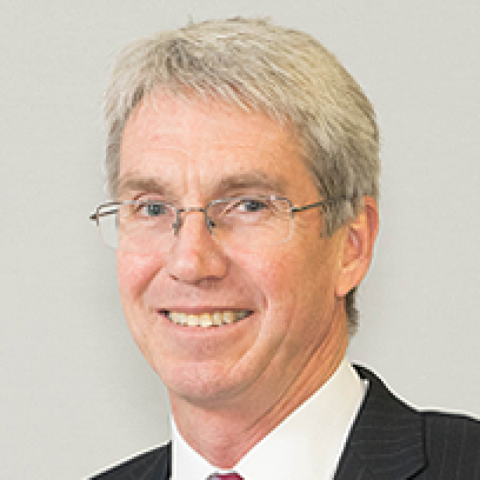
Mr Stephen Cooper
Chairman
Stephen Cooper is a managing director of Grant Samuel, a leading independent Australian investment banking business. Stephen has over twenty-five years of experience in investment banking and has been responsible for numerous corporate advisory assignments including public company takeovers, mergers, business sales and acquisitions, schemes of arrangement, capital raisings and business valuations. Stephen has a strong emphasis and commitment towards corporate governance. He holds a BComm (Hons) from the University of Cape Town.
-
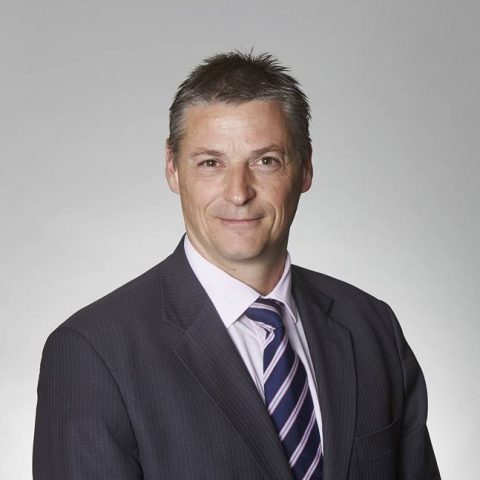
Dr Julian Chick
Executive Director
Experienced healthcare professional with over 25 years of experience running early and late-stage R&D projects, launching medical devices into the global markets, sales and marketing. As the COO at the ASX listed Admedus Ltd, Dr Chick oversaw the R&D development, regulatory approvals and launch of several tissue products in North America, Europe and Asia. During his time, the company grew from $12M to > $200M. He has PhD in Muscle Physiology and worked in healthcare and biotechnology for private equity and venture capital.
-
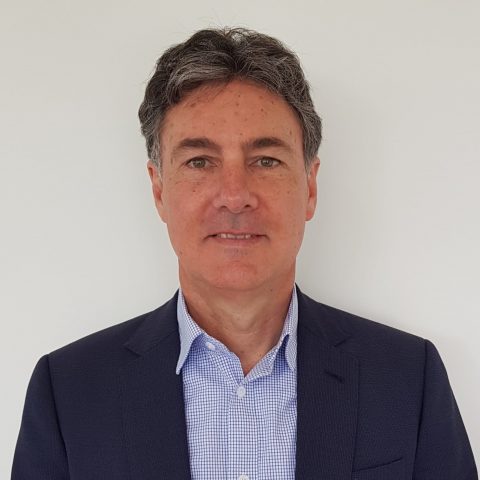
Dr Michael Panaccio
Non-Executive Director
Michael Panaccio has been a director of numerous technology businesses in Australia and the USA including SIRTeX Medical Ltd, Engana Pty Ltd (now part of Finisar Corporation), Energy Response (sold to EnerNoc Inc), ImpediMed Ltd, and Protagonist Therapeutics Inc. He currently serves on the boards of dorsaVi Ltd, Armaron Bio Ltd and Cylite Pty Ltd. Dr Panaccio is one of the founders of Starfish Ventures, a venture capital firm that invests in early-stage technology companies and plays an active role in the management of its portfolio. Dr Panaccio is currently a non-executive Director on ASX listed dorsaVi Ltd (ASX:DVL).
-
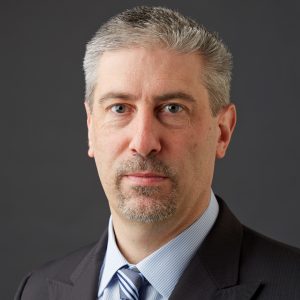
Dr David Rhodes
Executive Director & CSO
More than 20 years of experience in healthcare and biotechnology. Held senior roles, including CSO with the ASX listed medical devices company Admedus Ltd where he developed technologies from early stage through to market approval. Previously Senior Vice President Biology at ASX listed anti-infectives development company Avexa Ltd. Dr Rhodes has successfully led multiple technology development programs, publishes in high impact peer reviewed journals and is an inventor on numerous patents. David is a visiting scientist at CSIRO and an Adjunct Associate Professor in the Faculty of Engineering at Monash University. David has a PhD in Biochemistry.

